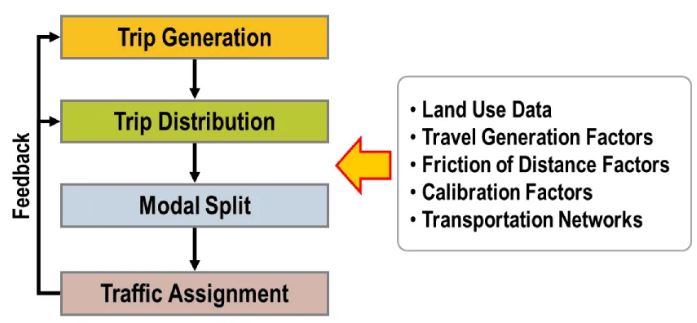An Assessment into the Capability of Transport Models in Accessibility (2013)
Transport Models in Accessibility Dissertation – Accessibility expresses the individual’s ability to obtain desired activities, services, goods and destinations. There are four main components of accessibility, including transportation, land-use, temporal and individual. A review of literature shows how the concept of accessibility can be incorporated in planning, where a more comprehensive accessibility analysis is a basic need for optimal planning. In land use / transport models, accessibility has usually been estimated as a useful but secondary output.
More detailed and accurate models in reflecting local conditions can lead to more accurate in evaluation of accessibility. This research aims to investigate the capability of current land use / transport models in evaluating accessibility. Therefore, seven modelling systems at very different levels of detail were examined against a set of criteria derived from the accessibility literature. These criteria were divided into five categories: first order supply impacts, second order supply impacts, user responses, supplier responses and public opinion responses.
The findings of analysis showed several significant gaps in modelling capability for measuring these impacts, responses and, consequently, accessibility. Some of the observed gaps are shared between all modelling systems represented in the lack of evaluation of journey quality, journey time reliability, information provision and fright traffic behaviour with regard to the first order supply. In general, other significant gaps arose in term of reflecting the second order supply impacts, changes in strategic locations, journey linking, public opinion as well as supplier responses made by other transport / land use authorities. Finally, based on these explored gaps, the research presents a number of recommendations for improving accessibility evaluation in land use / transport models.
First, the methodology of this research is described in Chapter 2. Next, a thorough review of the accessibility literature, including description of accessibility definitions, components, needs and measures as well as the different purposes and barriers of accessibility implementation in transportation planning, is presented in Chapter 3. Chapter 4 contains a detailed summary of seven of the most widely used land-use / transport models that will be involved in carrying out the research analysis.
The criteria used to analyse the capability of these models as well as the full results of analysis are presented in Chapter 5. An explanation of the results and findings is summarised in Chapter 6 while Chapter 7 identifies the important gaps that are observed in modelling capability. Finally, a summary of the research and recommendations for improving the model’s capability are presented in Chapter 8.
- 17,000 words – 76 pages in length
- Excellent use of literature
- Good analysis of subject area
- Well written throughout
- Ideal for construction management students
1 – Introduction
2 – Research Methodology
Dissertation Methodology
Data Collection
3 – Literature Review
What Is Accessibility?
Accessibility and Mobility
Components of accessibility
Accessibility Planning
Places and People
Communication and Transport
Spatial Detail and Geographical Level
Measuring Current Accessibility Performance
Accessibility Need
Accessibility Barriers
Spatial
Temporal
Financial
Physical
Environmental
Information
A Review of Accessibility Indicators (Measures)
Place Accessibility Measures
Individual accessibility measures
Accessibility Models
Further Issues in Accessibility Models
Measurement of Attraction Masses
Measurement of Spatial Separation
Time of Day
Unimodality versus Multimodality
Choice of Demarcation Area
Dimension Problem
4 – The Case Studies
DSCMOD Model
IMREL Model
LILT Model
MEPLAN model
MENTOR Model
LUTI model
SPM Model
5 – Findings
Accessibility Evaluation in Land-Use/Transport Models
Analysis of the Models
First order supply impacts
Second Order Supply Impacts
User Responses
Supplier Responses
Public Opinion Responses
6 – Findings
First Order Supply Impacts
Second Order Supply Impacts
User Responses
Supplier Responses
Public Opinion Responses
7 – Gaps In Modelling Capability
First Order Supply Impacts
Second Order Supply Impacts
User Responses
Supplier Responses
Public Opinion Responses
8 – Conclusions and Recommendations
Recommendations
Limitations
References

